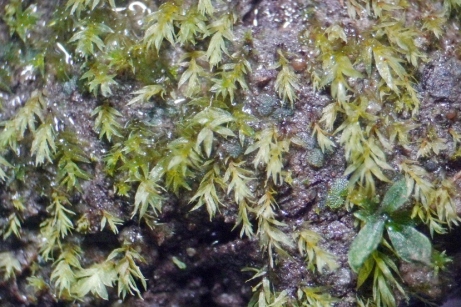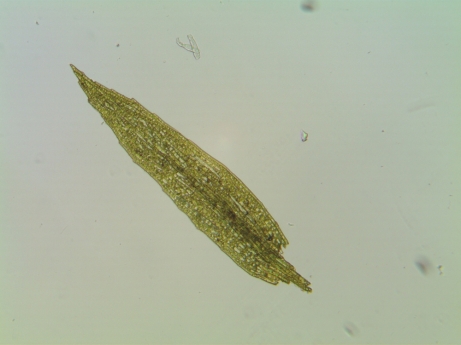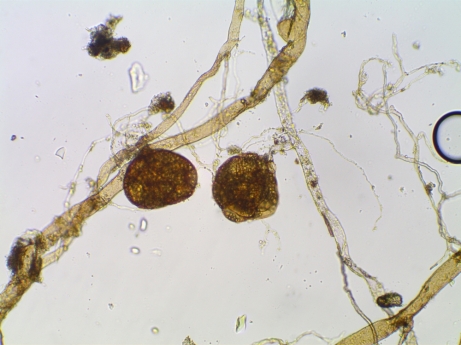One of several small Bryums and Pohlias that many bryologists tend to avoid but, with patience and a dissecting microscope can be identified with good accuracy. It is closely related to another small Pohlia, P. lutescens and, despite reports to the contrary, it is the experience of the author that it is considerably commoner than that species.

A good place to look for it is at the edge of a shaded lane where there is continual deliberate or accidental cutting back to expose fresh earth. Then you will often find a mixture of colonising mosses, such as small Fissidens, Bryum spp and quite often Pohlia too. On basic soils most small Pohlia in this situation would tend to be P. melanodon with very obvious red stems but on neutral to acidic soils, a pale yellowish green moss with elongate, lanceolate leaves is worth investigating. P. wahlenbergii is almost always a bluish shade of green and normally a little larger. Most small Bryums have rather wider leaves for their length and a stronger nerve. The one that most resembles a Pohlia is perhaps B. sauteri but that has very distinctive tubers and would be worth searching for in its own right.

Apart from the narrow leaves, even with a hand lens it is possible to see that the nerve stops well short of the apex of the leaf. The stems can be a bit reddish at the base but much less so that in P. melanodon. The upper margins of the leaf are usually denticulate, a good indicator for Pohlia. The cells are elongate too and on this species always seem to average around 14 microns. More than 16 microns would tend to indicate P. melanodon whereas less than 10 microns would point towards P. lutescens. The cells at the leaf margin are a bit narrower and may appear to form a very weak border. The leaves can be slightly glossy and this may be leading to over-recording of P. lutescens since that is a defining character for that species.

It is wise to check the tubers on this species because they are an important identification feature. They can be tricky to find however and one method is to gently tease apart a root mass attached to a small number of plants under water at low magnification. The rhizoids will be found to be mostly hyaline and smooth and very thin, sometimes flattened. The tubers tend to be on the longer rhizoids rather than near the base of the plant. With care, it is usually possible to find a few. They are pale brown or yellowish, around 100 microns in diameter and are smooth. The illustration here shows one with completely smooth cells and another with a few slightly protuberant cells. P. lutescens has tubers with much more protuberant cells and also the narrower laminal cells. P. melanodon and P. wahlenbergii don’t have tubers.
When identifying any tubiferous Bryum or Pohlia, the main concern is that the rhizoids might belong to a different plant to the one under investigation. It is possible to gradually wash away soil, on a slide using a tissue to mop up excess, leaving the rhizoid attached to the plant and still with tuber(s) attached. Except perhaps where there is a large patch of what is clearly one species, there is no real shortcut for this step and if the habitat is as described above, there are likely to be small Bryums around and their tubers could well be scattered in the soil.
This is a well-defined species which should be being recorded more often.

Thanks Tom, this is very useful and good timing. I think I have some from a trip to Plumpton on Thursday; only two immature shoots but there are a couple of tubers.
LikeLike
You need to ensure that the leaves are not too immature as small Bryum spp. can have a shorter nerve when the leaves are still growing. They wouldn’t normally have a denticulate upper leaf margin though. Immature leaves are often characterised by very thin cell walls, lack of any secondary colour, densely granulose cell contents. However, the fact that you have tubers would indicate the shoots are possibly more mature than you think, assuming they are on the same plant.
LikeLike
The leaves are slightly denticulate and the tubers definitely attached, (or were yesterday!)
LikeLike
Pingback: Pohlia lutescens | Sussex Bryophytes